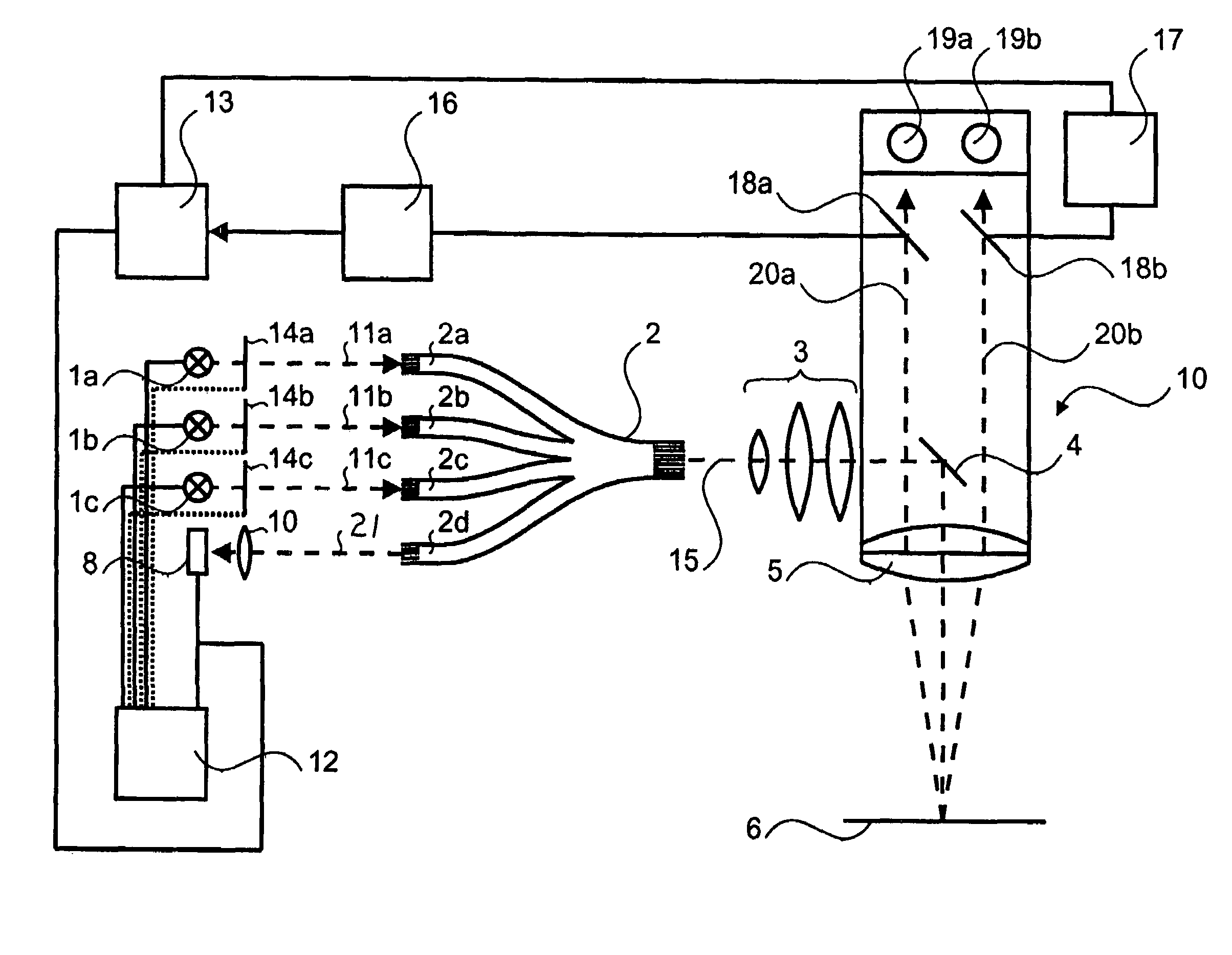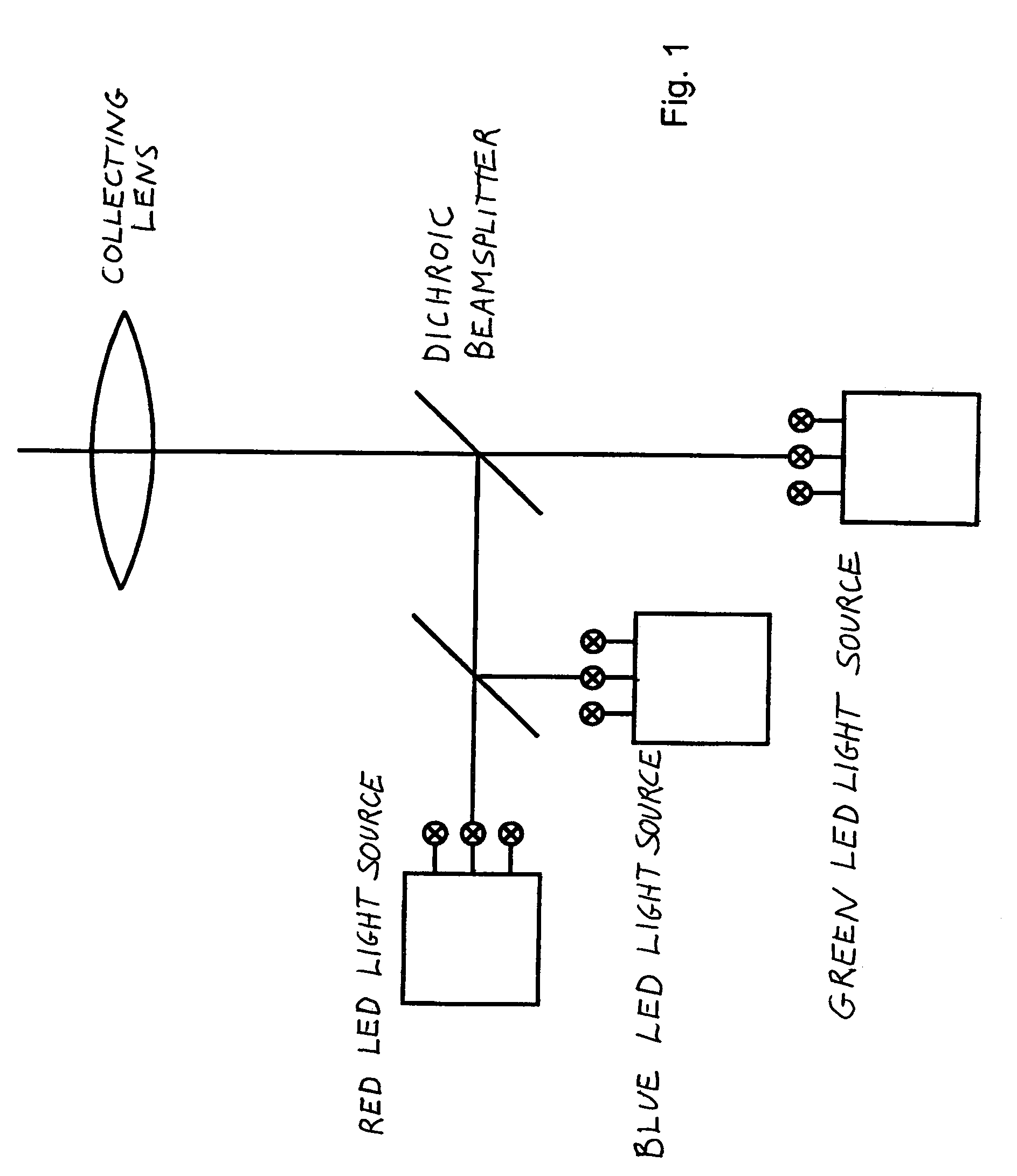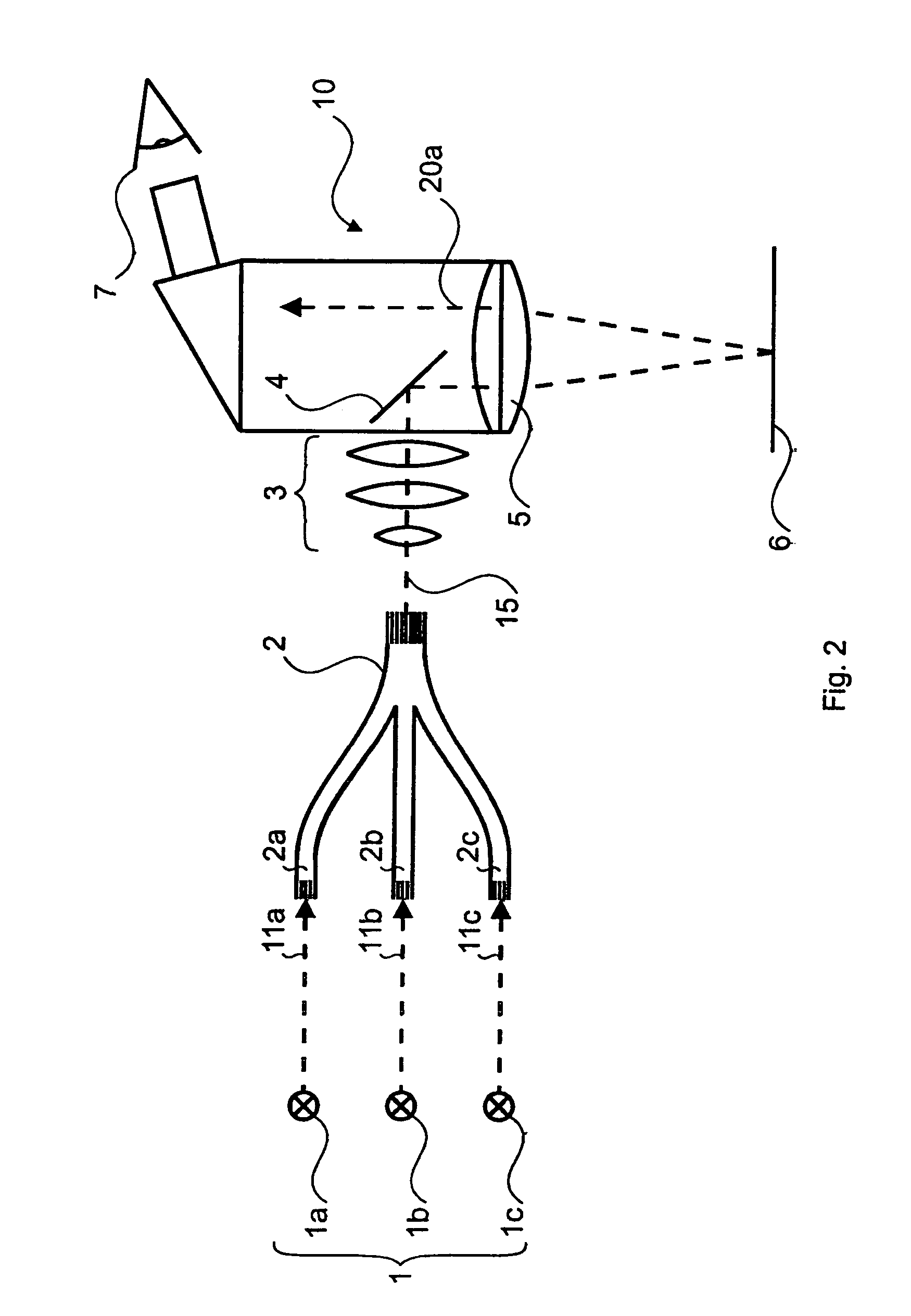Light-emitting diode illumination system for an optical observation device, in particular a stereomicroscope or stereo surgical microscope
a technology of light-emitting diodes and illumination systems, which is applied in the direction of lighting and heating apparatus, instruments, optical elements, etc., can solve the problems of not being able to individually control individual leds, light intensity, and relatively bulky, and achieve no increase in space requirements
- Summary
- Abstract
- Description
- Claims
- Application Information
AI Technical Summary
Benefits of technology
Problems solved by technology
Method used
Image
Examples
Embodiment Construction
[0033]In FIG. 1, the light of a red, a green, and a blue planar LED light source is mixed into white light, in known fashion, using dichroic splitters.
[0034]The illumination apparatus depicted in FIG. 2 encompasses at least one red-light-emitting LED 1a, one green-light-emitting LED 1b, and one blue-light-emitting LED 1c, which respectively emit red light 11a, green light 11b, and blue light 11c. This red-green-blue arrangement constitutes LED arrangement 1. Each of the light-emitting diodes 1a, 1b, 1c has associated with it one respective input of a total of three light guide arms 2a, 2b, 2c. The three light guide arms 2a, 2b, 2c come together and thus constitute a light guide with coupler 2 that has a single output. Here white mixed light 15 travels through an illuminating optical system 3 onto a mirror 4, by which it is directed through a main objective 5 of an optical observation device 10. Viewer 7 then sees the illuminated specimen 6 through observation beam path 20a.
[0035]Th...
PUM
 Login to View More
Login to View More Abstract
Description
Claims
Application Information
 Login to View More
Login to View More - R&D
- Intellectual Property
- Life Sciences
- Materials
- Tech Scout
- Unparalleled Data Quality
- Higher Quality Content
- 60% Fewer Hallucinations
Browse by: Latest US Patents, China's latest patents, Technical Efficacy Thesaurus, Application Domain, Technology Topic, Popular Technical Reports.
© 2025 PatSnap. All rights reserved.Legal|Privacy policy|Modern Slavery Act Transparency Statement|Sitemap|About US| Contact US: help@patsnap.com



